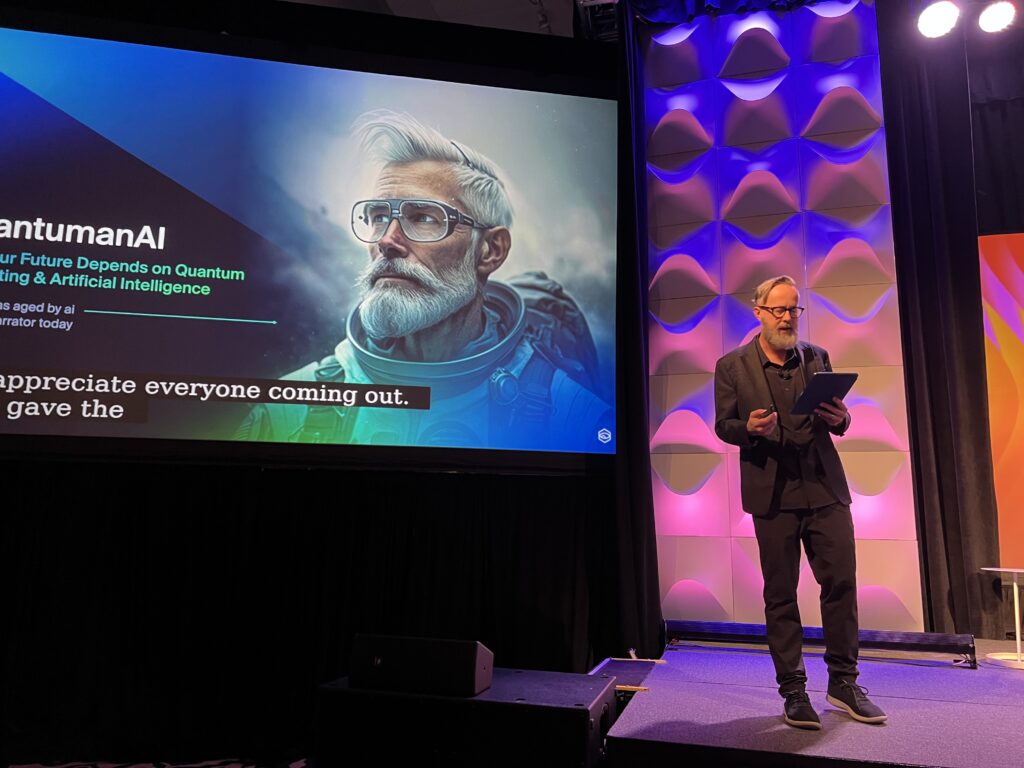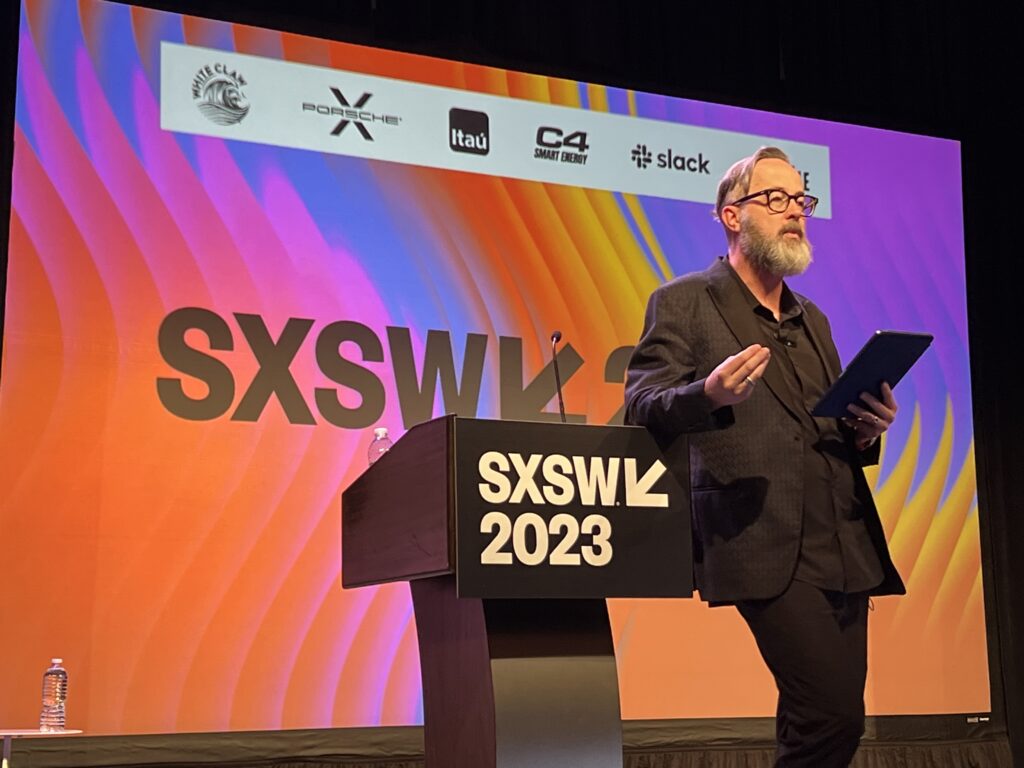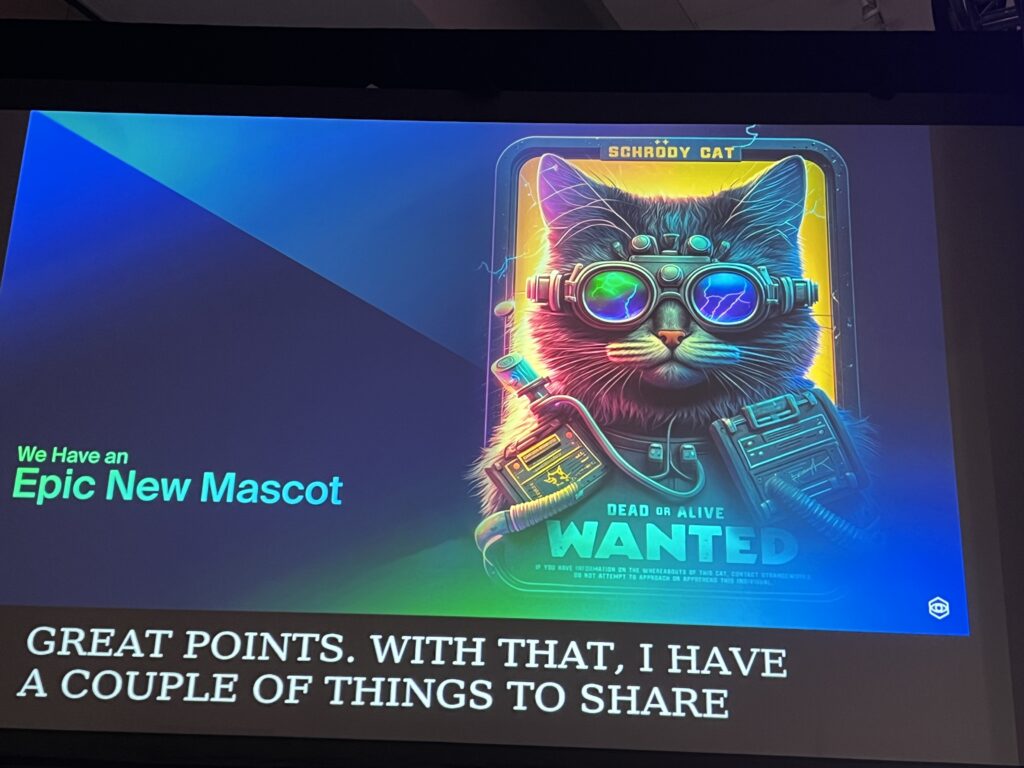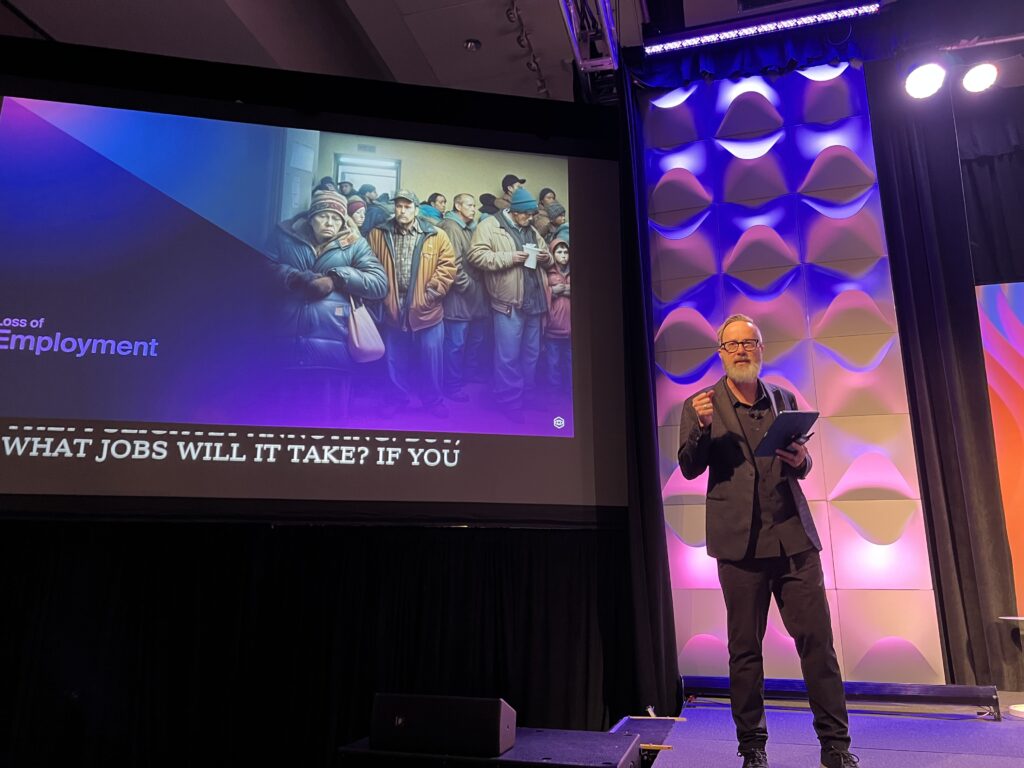
Five years ago, Will Hurley launched his quantum computing company, Strangeworks, on the main stage at South by Southwest.
On Wednesday morning, he returned to SXSW to present the power of quantum computing and artificial intelligence to solve the world’s biggest problems and change how everyone works and lives.
“I think there’s a lot of dystopian fears out there; I think we should be talking about the utopian stuff,” Hurley, known as Whurley, said.
He spoke on “QuantumAI: Why your future depends on the convergence of Quantum Computing & Artificial Intelligence” to a packed ballroom of about 600 people. Other people were turned away at the door when the room filled to capacity.
During his presentation, Whurley spoke from a teleprompter with his speech on a handheld iPad.

He spoke on “how quantum computing and artificial intelligence are two of the most rapidly advancing, controversial, and debated fields in technology today.” Austin-based Strangeworks develops quantum computing software and has 21 employees. The company has raised $4 million in seed-stage funding.
“The convergence of these two technologies will play a significant role in shaping the future of our species and the world as we know it,” according to Whurley.
Throughout his presentation, he hinted that he was doing something different. And at the end, he revealed that everything he said was created with ChatGPT 4, the conversational artificial intelligent agent created by OpenAI. He said he came up with the idea when he submitted the teaser for the talk on the SXSW programming site. Then he used ChatGPT to come up with a presentation outline. And a day ago, he created the entire presentation with ChatGPT and AI-generated images. He re-did the presentation when the latest version of the software was introduced yesterday.
All of the images on the slides were created with AI. And a magazine, “Schrody Cat,” handed out to attendees, was created in 3 hours. “Everything written, seen or printed in this book has been co-created with AI,” according to a statement on the publication.

At the beginning of his presentation, he hinted that he was doing something different and encouraged the audience to take pictures because he would tell them about them at the end of the presentation.
He started by explaining quantum computing, a technology that uses quantum mechanics to solve problems too complex for classical computers.
Quantum computing massively speeds up computer power and can lead to improvements in drug discovery by a lot, Whurley said. He said it could also lead to more efficient batteries and fix environmental problems.
Quantum computing has many applications in cryptography, weather forecasting, and optimization of train schedules and supply chains.
Quantum-AI technology can also have a profound social impact.
“We are building technologies that could get out of our control,” Whurley said.

The fear is of creating a machine like the T-1000, a shapeshifting android Terminator assassin featured in the movie “Terminator 2: Judgment Day.”
The fear is the robots will kill us or make people their pets, he said. The technology could also lead to income inequality and economic upheaval, Whurley said.
But it can also lead to social and economic progress, Whurley said. Monitoring banking systems in real time can lead to greater accountability in financial systems. It can also lead to improved technologies for sustainable energy. It can lead to higher productivity with autonomous robots and drones for agriculture and manufacturing, and as Whurley predicted, 100 percent unemployment by 2060.
At the end of his presentation, Whurley also said that he stopped blogging on March 13th, 2018, and that his website is now filled with hundreds of articles that were AI-generated while he was on stage.
At Whurley’s book signing following his presentation, Hugh Forrest, Co-president of SXSW and Chief of Programming, was nearby. When asked about what he thought of Whurley’s presentation done exclusively with AI-generated content and images, he said he didn’t see it. But he had heard it was a successful event. But he doesn’t think technology will replace human creativity anytime soon.
“I think Whurley’s middle name is interesting and eccentric, it’s part of his brand, and it has served him well,” Forrest said.
In 2030 when SXSW meets, everyone will understand better how to implement AI robots as virtual assistants, Forrest said.
So much of SXSW is built on creativity, human creativity, and imagination, that’s what makes SXSW, and that’s not going away, he said.
“We will have more assistance from more machines, more software, more hardware in the future,” Forrest said.
